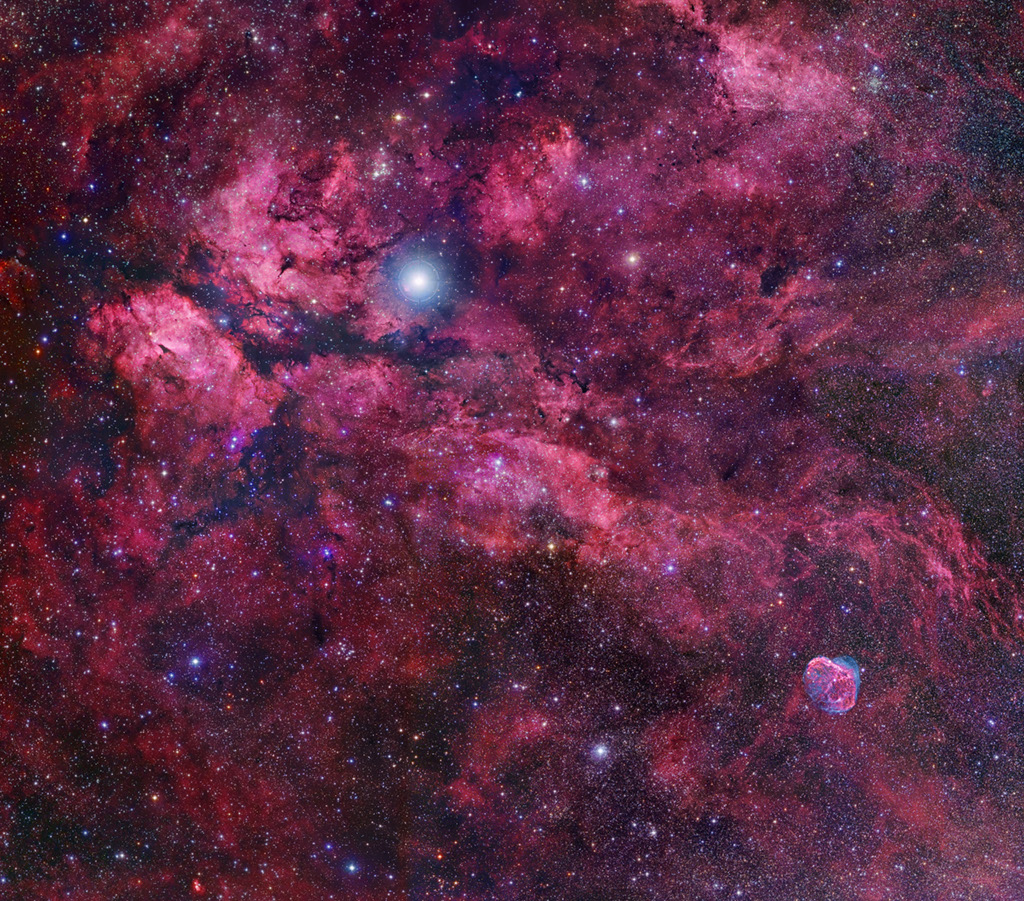more »
In cosmic brush strokes of glowing
hydrogen gas, this beautiful skyscape unfolds across the plane of our Milky Way Galaxy near the northern end of
the Great Rift and the center of the constellation
Cygnus the Swan.
A 36 panel mosaic of telescopic image data, the scene spans about six degrees. Bright supergiant star
Gamma Cygni (Sadr) to the upper left of the image center lies in the foreground of the
complex gas and dust clouds and
crowded star fields. Left of Gamma Cygni, shaped like two luminous wings divided by a long dark dust lane is IC 1318 whose popular name is understandably the Butterfly Nebula. The more compact, bright nebula at the lower right is NGC 6888, the
Crescent Nebula. Some distance estimates for Gamma Cygni place it at around 1,800
light-years while estimates for IC 1318 and NGC 6888 range from 2,000 to 5,000 light-years.
Zazzle Space Gifts for young and old
